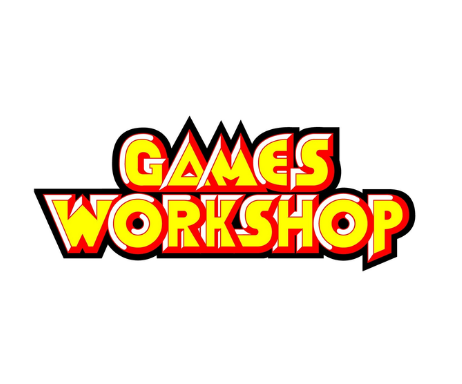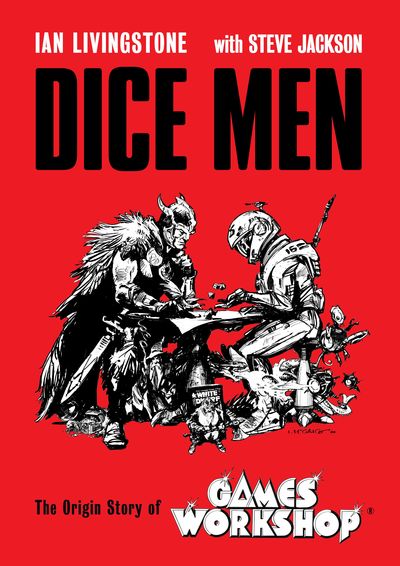Largely they tell the story of Games Workshop as it existed from the mid-70s to the mid-80s, as a company run in London by Ian Livingstone and Steve Jackson. That sounds obvious, but put a pin in it for later. That company starts out life as a hobby business without much plan behind it; the Men send out a kind of mission statement for “the Games Workshop” which calls it a “games club/community” and identifies three strands for its operations, namely publication of Owl & Weasel, making the aforementioned hand-made wooden games, and also something identified as ‘Fringe Games,’ an offer by GW to help games designers (here quaintly called ‘inventors’) get their games to market, an offer for which sadly no details are attached. In the backwards view of history this newsletter is adorable in its naivete; it’s suggestive of a group of enthusiasts getting in miles over their heads playing at running a company which will be lucky to survive its first year, never mind eventually grow into a multinational. Largely it’s suggestive of that because that’s what it was. The Men at this time are three blokes in a flat who really, really love games, and want to Do Games as a living and are grabbing at whatever they can think of to turn that dream into a reality; Livingstone himself describes it as “role-playing as businessmen engaged in the business of role-playing games.”
I say three blokes, but really it’s two. The thing that makes Games Workshop – the break that catapults them from messing about playing at running a company into actually doing so – is Dungeons & Dragons. Livingstone and Jackson are absolutely enthralled by D&D, and almost by accident – on the back of a single trade order, and Gary Gygax improbably coming across a copy of Owl & Weasel – GW gets exclusive three-year distribution rights to it in Europe. The enthusiasm around D&D straps a rocket to them, and rapidly transforms the company. Perhaps the most rapid of those transformations is that in 1976 John Peake leaves, because he doesn’t care about D&D at all while the other two are busy aligning the company around it. His departure kills off that early manufacturing arm, the Workshop part of Games Workshop, which won’t spring back into existence until Bryan Ansell comes on board with the founding of Citadel Miniatures. In the intervening period Games Workshop is more just Games Shop, a retail business in the familiar LGS mold of many independent shops out there today. It does have a couple of extra strings to its bow in the form of its publishing arm, first with Owl & Weasel and then from June 1977 White Dwarf, a name which needs no introduction, plus its events business in the form of Games Day, which starts as one of those moonshot projects and then becomes a more and more regular feature of Games Workshop’s early operations as it proves enormously popular.
The transition from the half-formed thing of the first Games Workshop newsletter to the retail business importing D&D (and whatever other American games it can get its hands on) and publishing White Dwarf marks the first significant phase in GW’s history. There’s some of the contemporaneous DIY punk feel to this early stage, with Livingstone and Jackson living in the affectionately-named “Vomit Pit” at times they’re not sleeping in Jackson’s van, putting their magazine together in a damp flat, selling product out of a shop so small that someone has to go out the back to make room if a customer comes in.
The big inflection point in this story happens in December 1978. It’s subtle at first, but it changes the whole shape of the thing irrevocably. That inflection point comes in the form of Citadel Miniatures, and its physical manifestation is in the person of Bryan Ansell. For the roughly two year period after John Peake leaves, Games Workshop’s business is much as described above, a mix of RPG and board games retail, miniatures sales, White Dwarf, and Games Day; a little later on they lose a key component as their exclusive distribution rights to D&D are not renwed, in a slightly ugly incident Livingstone clearly still feels the sting of, but they’re still the major importer and retailer of it in the UK and Europe. “Miniatures” there means other people’s; they have been selling miniatures, but they haven’t been making them. That changes with the realisation that they stock some US ranges where manufacturing in the UK would be a lot cheaper than importing from America, but they’re not planning to produce them themselves. Instead they get the contract and then licence out the manufacturing rights to a third party. This third party is Asgard Miniatures, Bryan Ansell’s original company, an established manufacturer based in Nottingham – and that location foreshadows events to come.
…
If that’s the story being told, then what is the second one I referenced before, which isn’t? Mainly it’s the story of Warhammer, and Nottingham, and the company Games Workshop actually ends up becoming. Some of that just isn’t in the scope of this book; Livingstone’s last link with GW is severed in 1991, before even the second edition of 40k, let alone such far-off ventures as GW becoming truly multinational or the Lord of the Rings licence or Age of Sigmar or any of that. Even further back, he and Jackson are basically hands off by about the middle of 1985, with the aforementioned handing over of executive control. As a consequence events after this point – the near-immediate consolidation of operations in Nottingham, the switch to exclusive focus on Games Workshop’s own products, the primacy of model manufacturing and of Warhammer 40,000 – are dealt with in a couple of summary paragraphs at the end.
…
This is a shame because it’s Citadel that really matters when you come back to the book’s tagline as “the origin story of Games Workshop.” In a very real sense, the Games Workshop that this book is about is dead and buried in 1985. The name continues, of course, but in terms of what the company is about, the one in Nottingham is really Citadel Miniatures wearing its dad’s suit. In a matter of months Bryan Ansell has fucked off all the bits about London GW that he didn’t like, including its London location; gone is the generalist approach to retail, the grab-bag of board games and RPG licences and dicking about with video games. White Dwarf becomes an in-house magazine for Games Workshop products, the shops sell Games Workshop products, everything else is out of the picture. The focus is clearly what he has always wanted it to be – Citadel manufactures miniatures in ever-increasing ranges and volumes, and the rest of the company exists to sell those miniatures, whether by making up games for them to be used in or by marketing them or by literally handing over boxes of them to punters for cash. That’s the Games Workshop that exists today and while the company has undergone an enormous amount of change in the intervening 35ish years the fundamental plan is the same. The most recent strategic report, covering 2021-2022, includes this description of Games Workshop: “Our ambitions remain clear: to make the best fantasy miniatures in the world, to engage and inspire our customers, and to sell our products globally at a profit. We intend to do this forever.” That statement could have come out of Bryan Ansell’s mouth in 1978 and it would have been just as true then, albeit much longer on ambition and much shorter on reality, as it is now.
…
If what you want is to read Ian Livingstone telling you about being Ian Livingstone and about his view of Games Workshop’s first ten years, plus quite a lot about Fighting Fantasy and an occasional digression about Cow Gum, then that is certainly here for you, and if you want to pore over curios from that period in the form of handwritten lists and a set of T-accounts flawlessly executed by Steve Jackson’s mum and covers of Owl & Weasel and so on and so forth, that is here too. As a narrative about Games Workshop’s origins, however, it’s merely serviceable, a half-finished sketch with some of the most critical and interesting details left tantalisingly incomplete.



Kick-started the book and glad I did. Hearing about the first 10 years, living out the van, and the luck and passion involved in building the first version of GW is pretty inspirational I think! If you have any interest in the roots of d&d or Warhammer then it’s worth checking out!
Good to hear. It’s the period I’m interested in an diversion into Fighting Fantasy are fine by me.